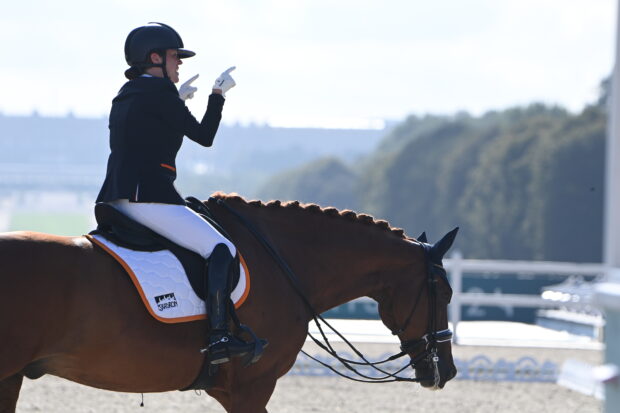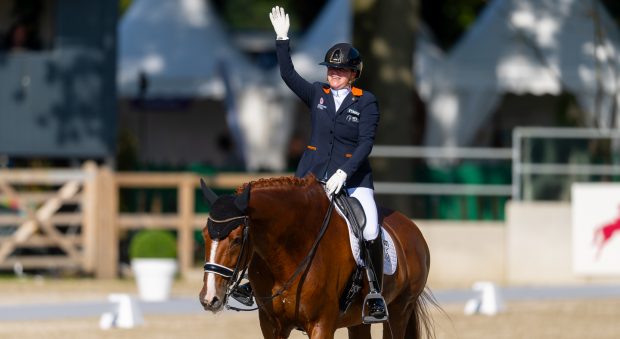Tokyo Paralympic medal contender Sanne Voets was listening to music in the car when inspiration came to her in a eureka moment.
The reigning world and European champion was in her car, listening to popular Dutch band Haevn, when she felt compelled to create a freestyle routine around the group’s music.
“It was a song about finding that fire within you, the thing that sets your soul on fire, going after that passion, and taking that leap of faith,” said the Dutch para dressage rider.
“It really moved me, and it felt personal. In my career as a dressage rider, I always did things differently to other people.” So Sanne booked tickets to a Haevn gig and approached them at the end, to ask if they would consider a collaboration.
“They were signing CDs and I just went there and said, ‘Hi, I’m Sanne, I’m aiming for Tokyo 2020 and I would love to work with you’,” she said.
“They were really not dressage people at all, but they were really open to it, and we decided to make a very unique piece of dressage music together. First time I heard it, I was like, ‘wow’.”
The 34-year-old added her Tokyo Paralympic freestyle soundtrack is “really, really different” to other dressage music people are used to hearing.
“Most dressage music has a good beat that you find and match with the rhythm of the horse. But this is like fairytale music. It has a very light piano and some electric sounds, and the singer has a very unique voice,” she said.
Sanne heads to Tokyo aboard the 13-year-old Vivaldi gelding Demantur as one of the Games’ top medal contenders. The pair won freestyle gold at the 2016 Rio Olympics with their routine to a soundtrack featuring Dutch dance star Armin van Buuren’s international hit “This is what it feels like”.
The combination went on to win three gold medals at the 2018 World Equestrian Games and 2019 European Championships. They head to Tokyo aiming for the elusive “triple-triple” of titles at consecutive championships.
Sanne explained how she has been preparing to cope with the heat.
“We had a very Dutch summer,” she said. “It was 18C, and here it is 38C. The difference is huge. So we rented an indoor arena, and huge, huge industrial heaters, and humidifiers. And we trained in 35 degrees, every day for two weeks, with the help of a vet and a physiologist, to make sure that we were prepared in the best way possible.”
The grade IV world number one is also a journalist and is hoping coverage of the event will focus more on sporting achievements than athletes’ disabilities.
“Sometimes, the first question is always, ‘What’s your handicap, and how did you get it?’,” she said. “I sometimes struggle with that. Is it really relevant to talk about? And is it OK to ask someone that?
“I’m not sure whether it is or not, because the question implies, ‘What’s wrong with you?’. I’m always like, ‘there’s actually more to me than my disability’.”
Sanne’s Tokyo Paralympic campaign will start with the grade IV individual medal competition on Thursday (26 August).
You might also be interested in:

Subscribe to Horse & Hound magazine today – and enjoy unlimited website access all year round

How to watch Paralympic dressage live from Tokyo: Channel 4 confirms coverage of equestrian competition

Everything you need to know about para dressage at the Paralympics

H&H’s expert guide to Paralympic dressage classification and grades
Horse & Hound magazine, out every Thursday, is packed with all the latest news and reports, as well as interviews, specials, nostalgia, vet and training advice. Find how you can enjoy the magazine delivered to your door every week, plus options to upgrade your subscription to access our online service that brings you breaking news and reports as well as other benefits.




